The bamboo plant, particularly the Lucky Bamboo (Dracaena sanderiana), is more than just a charming indoor plant—it’s a symbol of luck, prosperity, and positive energy according to Feng Shui. Originating in Asia, this resilient plant has become a staple in homes, offices, and even businesses, not just for its easy maintenance but for its powerful metaphysical properties.
In Feng Shui philosophy, the way a bamboo plant is selected, placed, and cared for can influence the flow of energy (chi) in your space, directly impacting health, wealth, and happiness. In this article, we will explore the importance of bamboo in Feng Shui, the right care practices, placement strategies, and symbolism of bamboo stalk numbers, to help you create a vibrant, energetically balanced environment.
Why Bamboo Is Important in Feng Shui
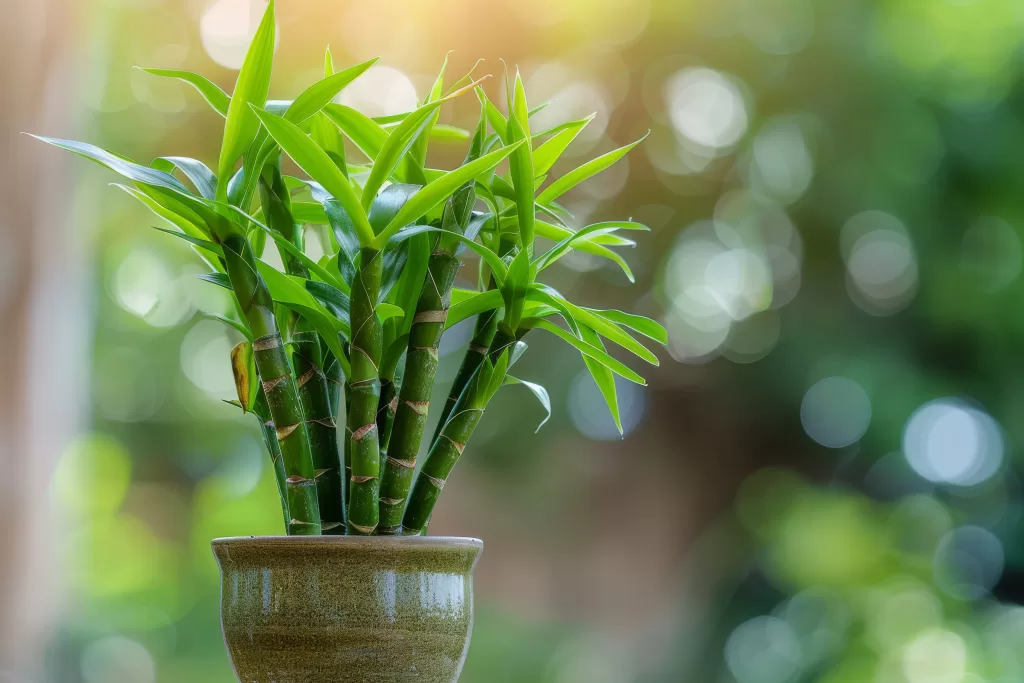
In Feng Shui, bamboo is a symbol of resilience, growth, peace, and good fortune. Its upright form and flexibility represent integrity and the ability to bend without breaking—qualities considered essential for a balanced life.
Lucky Bamboo is not a true bamboo but shares similar characteristics and energy. When placed and cared for properly, it attracts:
- Prosperity
- Good health
- Spiritual harmony
- Career success
- Relationship growth
Bamboo also incorporates all five Feng Shui elements:
- Wood: The bamboo itself
- Water: It often grows in water
- Earth: Pebbles in the container
- Fire: Tied red ribbon or red pot
- Metal: Glass or ceramic pot, or added coin charms
This elemental balance makes it a complete Feng Shui enhancer.
Types of Bamboo Plants Used in Feng Shui
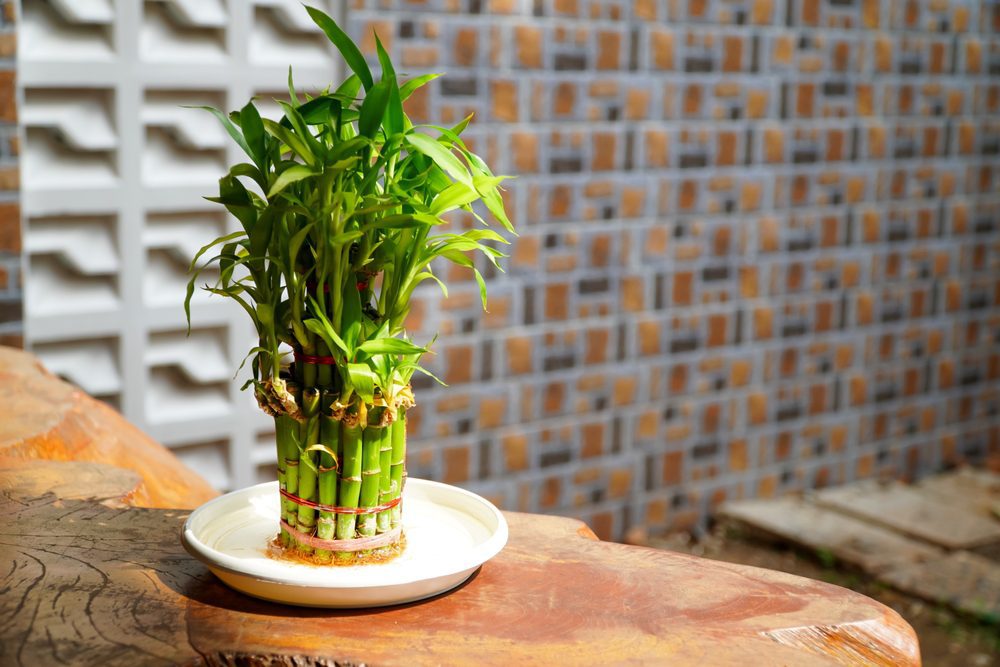
While traditional bamboo can be planted outdoors, Feng Shui uses Lucky Bamboo (Dracaena sanderiana) for indoor spaces. The stalks are often curled, twisted, or braided into attractive shapes.
Popular Forms:
- Straight stalks in vases
- Spiral-shaped bamboo
- Braided or woven towers
- Heart-shaped or layered arrangements
Each form and number of stalks carries a symbolic meaning, which is essential in Feng Shui practice.
The Meaning of Bamboo Stalk Numbers
Choosing the right number of stalks is crucial in Feng Shui, as each number has a different energy purpose:
| Number of Stalks | Meaning |
|---|---|
| 1 | Simplicity and focus |
| 2 | Love and relationships |
| 3 | Happiness and growth |
| 4 | Avoid! Associated with death |
| 5 | Health and balance |
| 6 | Prosperity and blessings |
| 7 | Spiritual development |
| 8 | Wealth and abundance |
| 9 | Good luck and fulfillment |
| 10 | Perfection and completeness |
| 21 | Ultimate blessing in all areas |
Important Tip: Avoid 4-stalk bamboo, as the number 4 is considered unlucky in Chinese culture due to its phonetic similarity to the word “death.”
Ideal Placement of Bamboo Plant According to Feng Shui
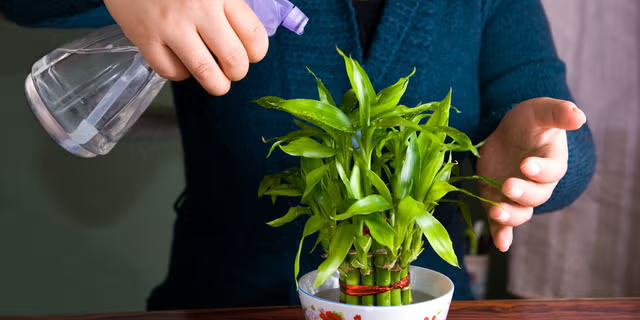
Where you place the bamboo plant plays a major role in how its energy manifests in your home or office. Below are some Feng Shui placement tips based on energy goals:
For Wealth and Prosperity
- Placement: Southeast corner of the home or office
- Why: Southeast represents wealth and financial growth
- Pro Tip: Use 8 stalks or a cluster of 8 or 21 for abundance
For Health and Well-being
- Placement: East direction (family and health zone)
- Why: East promotes vitality and harmony in the home
- Pro Tip: Use 5-stalk arrangements for balanced health
For Love and Relationships
- Placement: Southwest corner of the bedroom or living room
- Why: Southwest governs love and marriage
- Pro Tip: Use 2 stalks tied with a red ribbon to enhance romance
For Career Growth and Recognition
- Placement: North sector of the room or desk
- Why: North relates to career and life path
- Pro Tip: Pair your bamboo with a coin charm or small water feature
Near the Entrance
- Placement: On either side of the main entrance (inside)
- Why: Welcomes positive energy and guards against negativity
- Pro Tip: Use a 6-stalk arrangement for attracting good fortune
Watering and Feeding the Bamboo
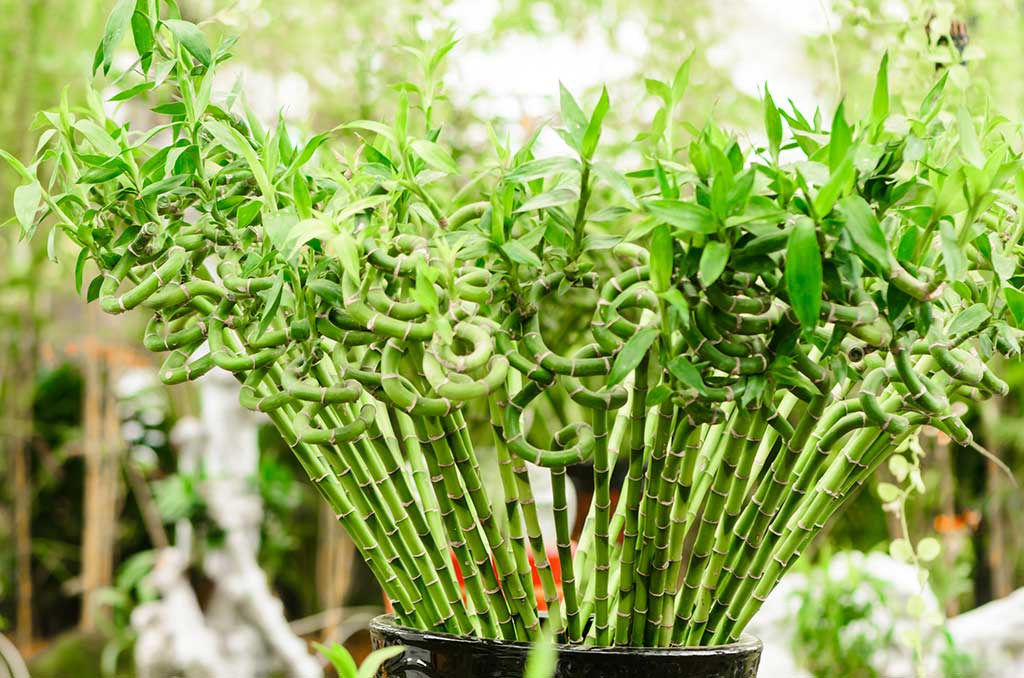
One of the biggest reasons people love bamboo plants is their low-maintenance nature, but they still need proper care to stay energetically vibrant.
Watering Tips:
- Use distilled or filtered water. Tap water may contain chlorine and fluoride, which harm the plant.
- Change the water every 7–10 days if the bamboo is growing in water.
- Ensure the roots are submerged, but not the entire stalk.
- If growing in soil, keep it slightly moist but not soggy.
Feeding Tips:
- Bamboo in water needs liquid fertilizer once every 4–6 weeks.
- Use a balanced houseplant fertilizer, diluted to half strength.
- Overfeeding can turn the leaves yellow, so feed sparingly.
Lighting and Temperature Requirements
Light:
- Bamboo prefers bright, indirect light.
- Avoid direct sunlight, which can scorch the leaves.
- Can tolerate low light, making it suitable for bedrooms and offices.
Temperature:
- Keep in temperatures between 18°C–30°C (65°F–85°F).
- Avoid cold drafts, AC vents, or heaters.
- Bamboo does best in humid environments, but average indoor humidity is usually fine.
Cleaning and Maintenance Tips
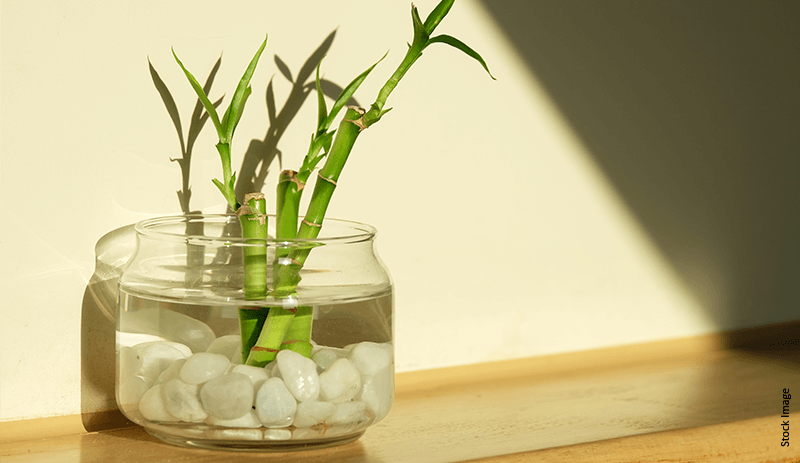
Maintaining cleanliness helps your bamboo plant emit positive energy without obstruction.
- Dust the leaves weekly with a soft cloth.
- Trim any yellow or dead leaves immediately.
- Remove rotting stalks from water or replace the whole arrangement if the roots get slimy.
- Keep the container clean—wash glass pots with mild soap monthly.
Common Bamboo Plant Mistakes to Avoid
Even though bamboo is hardy, some bad Feng Shui practices can hinder its energy:
- Using plastic containers – Use natural materials like ceramic, glass, or clay.
- Neglecting dying plants – A dead plant emits negative chi; replace it promptly.
- Placing it in the bathroom – Bathrooms can flush away energy unless corrected with mirrors or strong light.
- Crowding the plant – Give it breathing space to allow energy to circulate.
Enhancing Feng Shui Energy with Add-ons
To elevate your bamboo plant’s energy, consider adding Feng Shui enhancers:
- Red Ribbon: Symbolizes fire element and energizes intentions
- Chinese Coins: For wealth and abundance
- Mirrors or Crystals: To amplify the energy and attract harmony
- Lucky Charms: Small bells or elephant charms enhance positivity
Spiritual and Emotional Benefits of Bamboo in Your Space
Beyond aesthetics and material prosperity, a well-maintained bamboo plant brings emotional grounding and spiritual upliftment:
- Encourages calm and mindfulness
- Promotes positive habits and focus
- Reminds you of personal growth and flexibility
- Helps remove mental clutter by balancing your environment
By aligning your bamboo plant with Feng Shui, you’re not just caring for a plant—you’re cultivating an atmosphere of balance, growth, and opportunity.
Conclusion
The bamboo plant, when properly cared for and thoughtfully placed, becomes more than just a decorative item—it becomes a living conduit of energy, prosperity, and peace. According to Feng Shui, your intentions combined with correct care and placement can transform this humble plant into a powerful tool for life transformation.
To recap:
- Choose the right number of stalks for your goal.
- Place it according to directional energy zones.
- Keep it clean, watered, and healthy.
- Add enhancers like red ribbons or coins to amplify intention.
By integrating Feng Shui bamboo plant care into your daily routine, you invite more than just greenery into your life—you invite positive energy, balance, and abundance into your space and spirit.
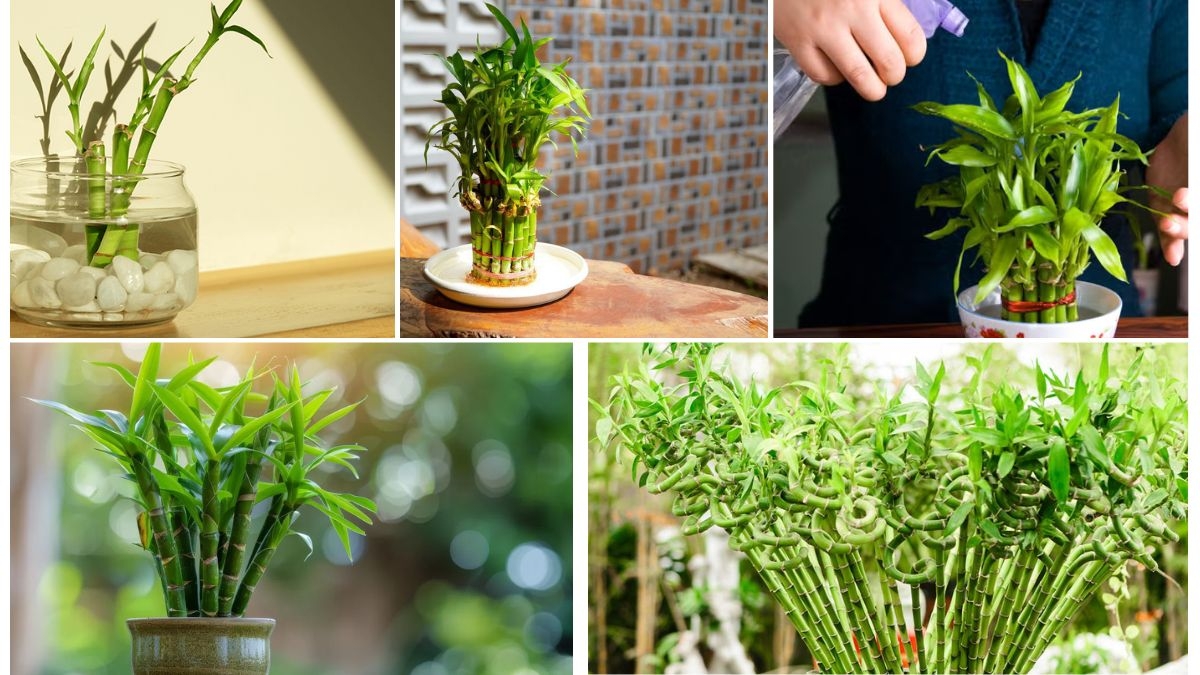





Leave A Comment